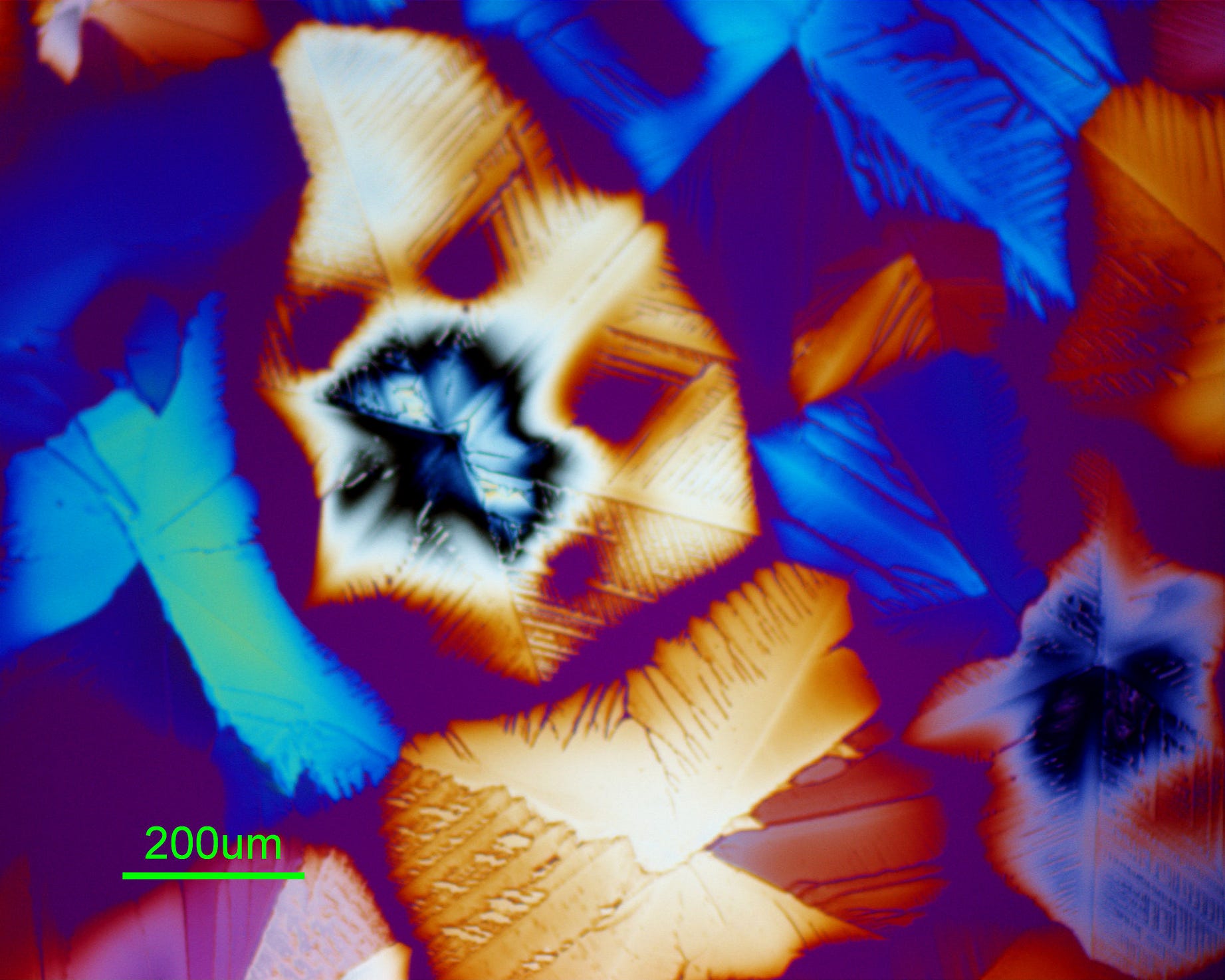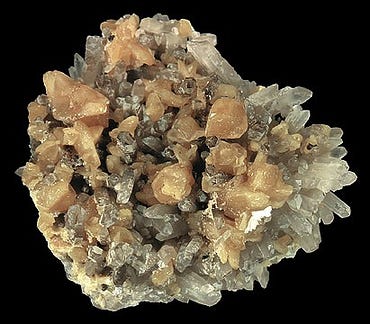Ella Alderson
We begin with an unlikely setting. South India’s shores are rimmed with blue ocean and swarming with shade from the tilted palm trees overhead. The country’s sun soaked coasts are heavy with mineral deposits of the flesh-colored kind. The jagged mineral monazite blushes in colors from oxblood red to a creamy sweet pink. While most of it is found on the eastern and southern coasts of India, it’s also abundant in the foreign countries of Australia and Brazil. Monazite contains an average of 7% thorium phosphate, though this number can be as high as 12%.
Thorium, when pure, is lustrous and silvery but later tarnishes to a heady black. It inhabits the dry land where it can be found in trace amounts in most rocks or soils, though for all its proximity to the sea thorium is insoluble and not readily available in ocean water. Compared to uranium it’s 3 times more abundant in the Earth’s crust. And it’s this metal that countries — like the monazite heavy India — are hoping to exploit to create the nuclear energy we should have had. Many believe the only reason our reactors depend on uranium and not thorium has to do with the development of nuclear weaponry during the Cold War. Weaponry fabrication is more easily done using the waste from uranium reactors than that from a thorium one.
But in every other respect it was thorium which promised more energy, less waste, cleaner power, and a higher efficiency at the plants. Like uranium, thorium absorbs neutrons and can change into a fissile element. Fissile elements are able to undergo fission, which means that they can split when they come into contact with a neutron and thus release stored energy that we can use to turn turbines and generate electricity. However, one of the reasons thorium is safer to work with is because it’s not fissile and thus cannot be directly used in a thermal neutron reactor. It needs what’s called a “driver”. These drivers would allow for chain reactions where the thorium would change into the very fissile uranium 233 (U-233). Drivers can be U-233, U-235, or Pu-239 (plutonium 239). Having this ability to absorb neutrons and then transmute makes the thorium fertile, even if it’s not fissile on its own.
 A vial of thorium. Image by W. Oelen.
A vial of thorium. Image by W. Oelen.
And while having to supply these drivers is a drawback, thorium can do something which is impossible with uranium. It has the ability to breed new fuel. If there is a low amount of neutron loss in the reactor — that is, if it’s running as efficiently as possible and is well-designed — the thorium fuel can create more uranium than it consumes. A reactor using thorium fuel in 1970’s Pennsylvania had 1.39% more fissile fuel upon inspection, meaning that breeding had occurred during its operation. In the right reactors (such as a liquid fluoride thorium reactor, or LFTRs) estimates say one ton of Th-232 can give us as much energy as 35 tons of uranium, which wastes 99% of fuel in modern nuclear power plants.
This waste from uranium fuel is made of isotopes like iodine, plutonium, and americium which will remain radioactive for up to 10,000 years. Thorium reactors, on the other hand, produce 1,000 times less waste and these isotopes are radioactive for only hundreds, not thousands of years.
 An image of the Molten Salt Reactor Experiment by Oak Ridge National Laboratories.
An image of the Molten Salt Reactor Experiment by Oak Ridge National Laboratories.
One of the most promising engineering designs comes from molten salt reactors (MSRs). At this kind of reactor, salt mixtures would incorporate uranium and thorium, melting at a range anywhere from 400 to 700ºC (752–1292ºF). This melted mixture, like an energetic elixir, would serve as both fuel and heat-transfer fluid. Transmutation of thorium into uranium heats the salt and, after transferring through a heat exchanger and a turbine, gives us — finally, brilliantly — electricity.
The Oak Ridge National Laboratory operated a demonstration MSR in the US during the 1960’s. More specifically it was a LFTR. The driver was U-233, though the experiment itself did not use thorium. Despite having to solve the problem of intense corrosion from the strong salt mixture, the experiment was beautifully designed and showed that thorium and MSRs had clean energy potential that surpassed that of uranium alone.

 Pictures of the fuel containing uranium (right) and the coolant (left) used at the Molten Salt Reactor Experiment. Image by Oak Ridge National Laboratories.
Pictures of the fuel containing uranium (right) and the coolant (left) used at the Molten Salt Reactor Experiment. Image by Oak Ridge National Laboratories.
But uranium has history. It was able to produce more powerful bombs that could raze cities, and though it came with greater dangers, it was too late for thorium to even compete. Reactors with thorium cycling still need a more refined design, analyzation, and economic backing before having any place in our future. But countries like China and India where thorium stores are thought to collectively be 946,000 tonnes, have plans to use information from past experiments — like the Oak Ridge MSRE — to construct reactors suited to thorium fuel. There is more interest in these countries for an alternative to our current power plants than there is in the United States.
For now thorium remains mostly trapped in the rare-earth monazite deposits on unassuming beaches. Despite the millions of tonnes of monazite on the balmy shores of India alone, it’s estimated only about 10,000 tonnes of it are extracted a year. And even if it could never fully replace solar or wind energy, it could still prove valuable in resolving any shortfalls in the energy infrastructures of our future. Docile compared to the more fissile uranium, thorium still blooms with a strong white light when it’s burned. Energy released. Blinding.


No comments:
Post a Comment